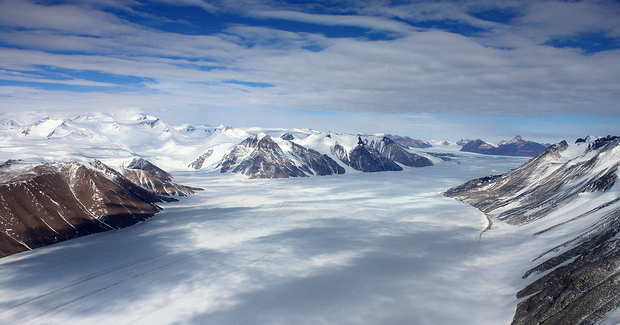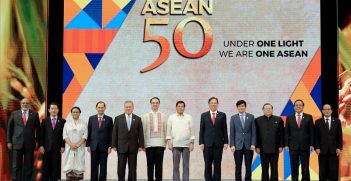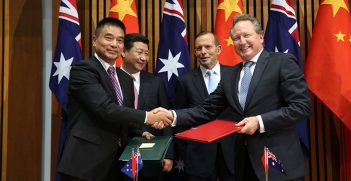Defining the “Rise” of China in Antarctica

China’s interests in the resource-rich Antarctic have grown in recent years.
Some alarmed voices claim that in the long run, China will likely overturn the Antarctic Treaty System (ATS), which has successfully devoted the Antarctic to peace and science since the end of the Second World War. This piece takes a close look at the rise of China in Antarctica from three dimensions.
History
China was missing in Antarctic affairs for a long time. At the climax of the so-called “Heroic Age of Antarctic Exploration” from the late 19th to early 20th Century, when several expeditions were conducted by European colonial powers to explore Antarctica, China was an inward looking, weak power, struggling to defend itself from the colonial powers. The honeymoon period between China and the West after the Second World War lasted only five years, ending after the Communist Party took power in 1949. The United States took the initiative to adopt the Antarctic Treaty in 1958. Negotiations however never included Communist China. It was not until 1978, after establishing diplomatic relations with United States and adopting an open door policy, that China began to reintegrate into the US anchored post-Second World War international system, including the ATS. From this starting point, China would rapidly catch up with the incumbents.
Activities
Chinese activities in Antarctica have been increasing over the past four decades. To date, China has undertaken 35 national Antarctic expeditions and runs four research stations in Antarctica with a fifth station to be completed in 2022. Chinese krill fishing in Antarctica has also grown since 2009, reaching 54,303 tonnes in 2014. Further, Chinese tourists are the second largest group of tourists in Antarctica. Through the so-called “Xue Long Tan Ji (Snow Dragon Exploring the Poles)” Project in China’s 13th Five-Year Plan for Economic and Social Development, the Chinese government is making significant investments in polar science and technology. Overall, there is no doubt that China is expanding its presence in Antarctica.
Governance
When discussing the rise of China in Antarctica from the perspective of governance, two issues have been most salient in recent years. The first is the establishment of marine protected areas (MPAs) in the Southern Ocean. This was raised in 2012 when the United States and New Zealand submitted a joint proposal to establish a MPA in the Ross Sea Region, while Australia, France and the EU made another proposal to establish a MPA network in East Antarctica within the Commission for Conservation of Antarctic Marine Living Resources (CCAMLR). China has been very skeptical about MPA proposals in the Southern Ocean. Despite its support of the Ross Sea Region MPA in 2015, China maintains its concerns against other MPA proposals.
The second issue is China’s proposal for a new Antarctic Specially Managed Area (ASMA) at China’s Kunlun Station, Dome A. The proposal was first submitted by a Chinese delegation in 2013, during ATCM XXXVI / CEP XVI in Brussels. Discussions between China and other Antarctic Treaty Consultative Parties, especially the United States, Australia, United Kingdom, France, Argentina, Norway, New Zealand, and Germany, continued for years. Four rounds of informal discussions were held during the intersessional period of 2013/2014 and 2015/2016. However, the Kunlun Station ASMA proposal could not be adopted due to lack of consensus.
The two aforementioned issues reveal one common theme – China’s interpretation of the “balance between protection and utilisation”. During his visit to Hobart, Australia in 2014, Chinese President Xi Jinping outlined that “understand, protect and use” should be guiding principles for Chinese Polar activities. The “Xue Long Tan Ji” Project is implemented to help China better understand Antarctica. China can then develop its own ideas about the right balance between protection and use of Antarctica. This will drive China’s preference to influence Antarctic governance regimes.
However, rather than having a secret agenda to pursue, China is still shaping up its general Antarctic policy. China seems to have no urgency in developing one, perhaps because the Antarctic has been solidly governed by the ATS. Further, as a rising power, China now can also be called a “hybrid State” in global ocean governance. In many aspects, China is still a developing country, which insists on adopting this role in the international arena, such as during climate change negotiations. China was completely in line with developing countries during negotiations of the United Nations Convention on the Law of the Sea (1973-1982). Nevertheless, China has emerged as a major industrial power. This situation sometimes puts China in an awkward position, regarding whether it should continue to support Antarctica as the “common heritage of mankind” and how to best develop benefit sharing regime of deep seabed mining. China is not a developing country merely asking to share benefits with industrialised States. China has made significant investments in polar science, deep-sea technology and survey activities. On the other hand, the Antarctic Treaty freezes sovereign claims, and there were strong voices in the past that the Antarctic should be a “Common Heritage of Mankind”. It will take time for China to determine the best strategy to peacefully use Antarctic resources in coming years.
Dr Nengye Liu is a senior lecturer at Adelaide Law School, University of Adelaide. This piece is adapted from his working paper ‘The Rise of China and Antarctic Treaty System”, presented at “Exploring Australia’s China Strategy in Antarctic Governance” Workshop, Adelaide, 7 November 2018, funded by the AIIA Workshop Support Grant. Together with Dr Jeffery McGee, Nengye is co-editing a special issue of the Australian Journal of Maritime and Ocean Affairs titled ‘Navigating Twenty First Century Challenges to the Antarctic Treaty System’, which will be published during May 2019.





